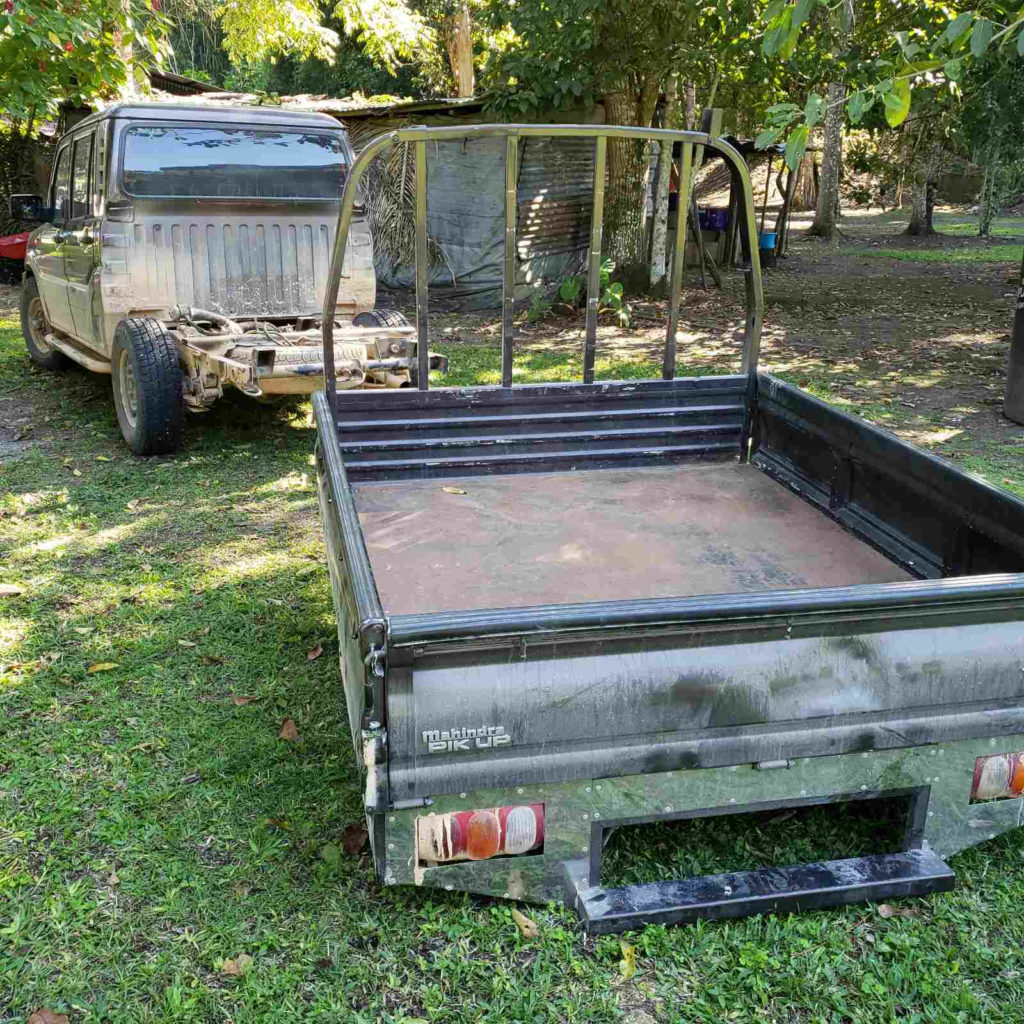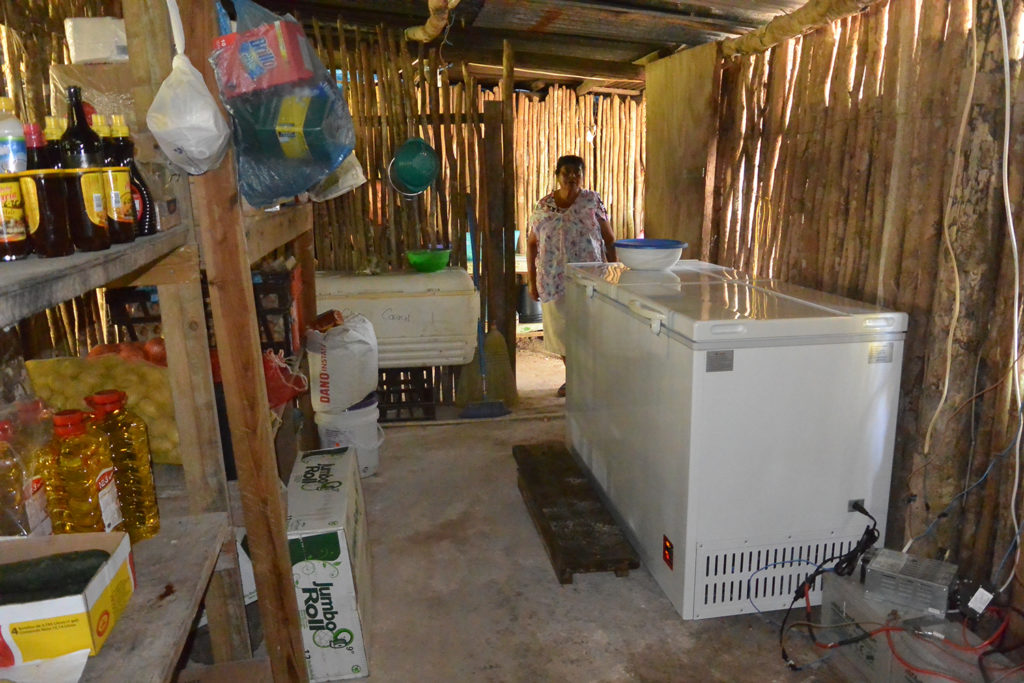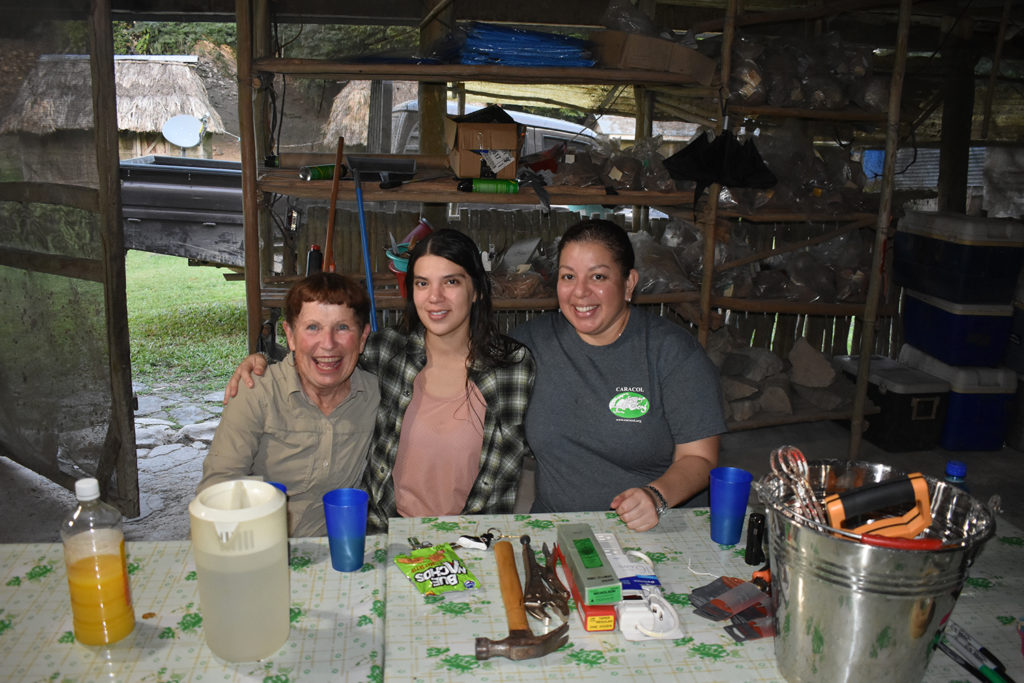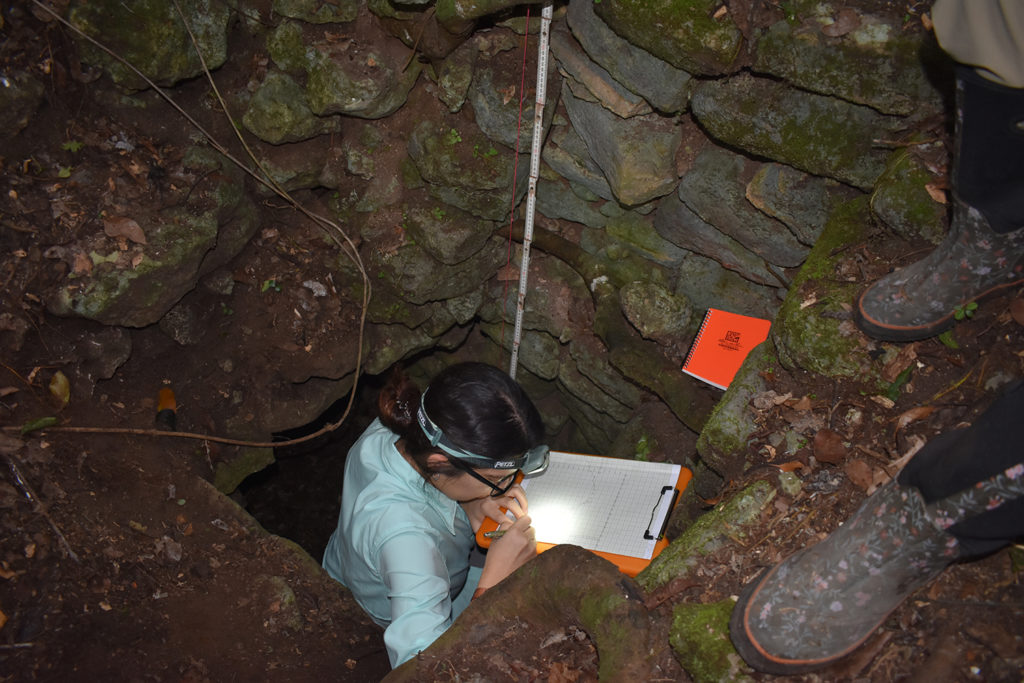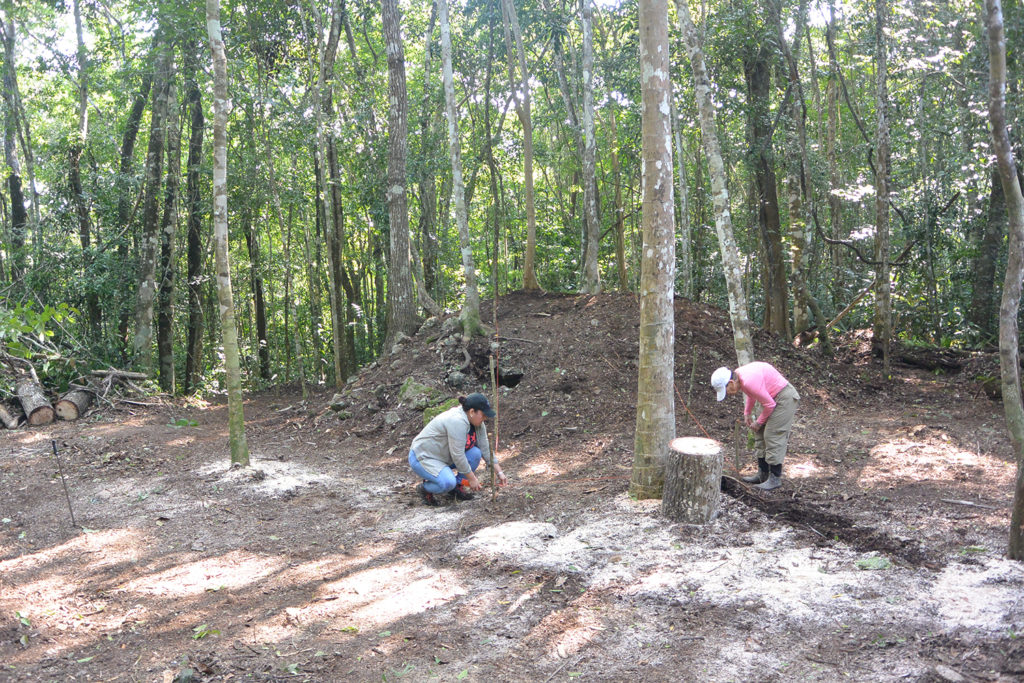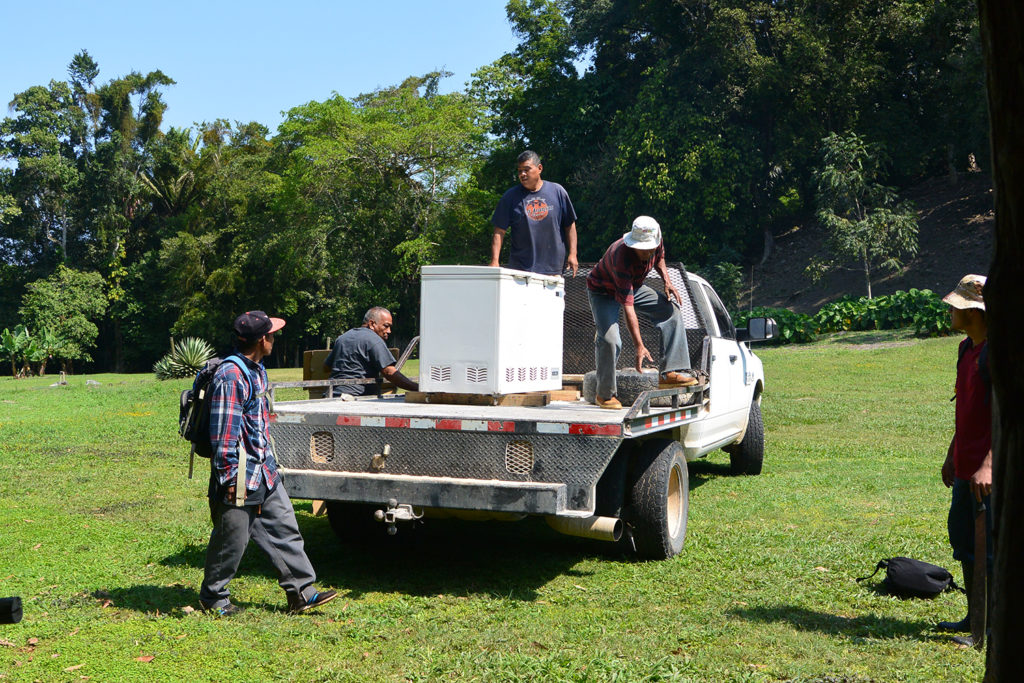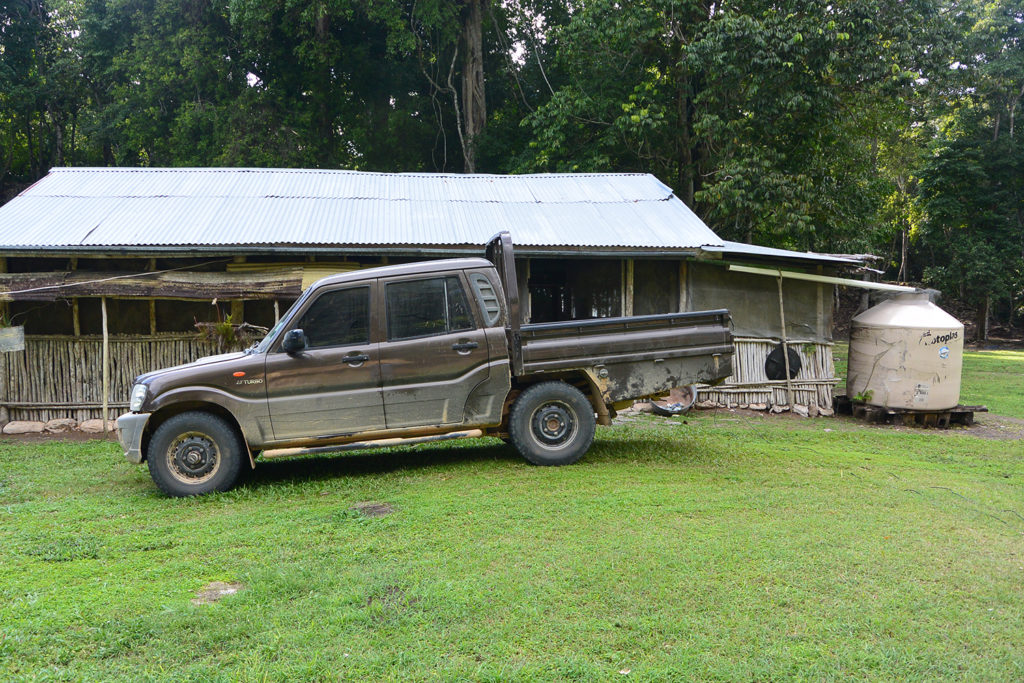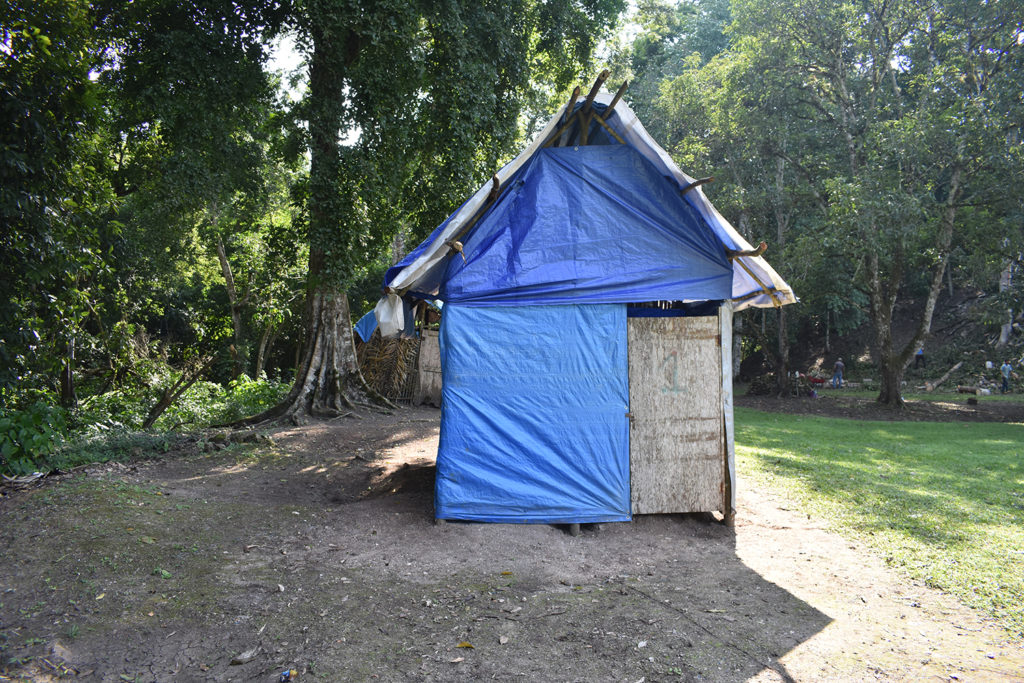Caracol 2020 – the 36th consecutive field season for the project. And, it is dry with no rain. The Macal River is a trickle of water at the Gacamallo Bridge. The wet season wasn’t really wet. This is both a blessing and an issue. The good part is that we are not being interrupted by rain. The issue is that we may need to truck water into camp, which is expensive.
Five men went into the site for the project on January 16 and 17 with the three cooks following on January 21. Another seven men came in on January 28, so we are at our full complement for the season. The men bushed the groups that we will be excavating all week.
Arlen Chase arrived January 23 in Belize and Maureen Carpenter arrived on January 24. After a brief trip into Caracol on January 25, both went into the site to stay on January 27. Melissa Badillo joined them on January 28 and Gabriela Saldana on January 29. Diane Chase, Mayra Arzate, and Shei Yu arrived on February 1 – just in time for excavations to start in the Puchituk area on Monday.
We began the season with a tomb clean-up north of the natural aguada that is located northeast of the Caracol C Group. The cross-sections and plan of this open chamber were finished this week. The tomb appears to have had its contents removed some time ago – after the capstones over its northern entrance had collapsed inward.
It has been a very interesting start to the field season. First, the pan came off the newly renovated Mahindra; it had been attached with the wrong bolts during repairs made after the 2019 field season. Luckily, it turned out to be a quick fix (thanks to a flatbed truck in camp that could get the pan out and to Belmopan) and was back in camp two days later. Next, the fan on our old solar freezer died and we were in danger of loosing all of our frozen meat. However, thanks to circumstances, we were able to get a new improved solar freezer from Spanish Lookout into camp within a 24 hour period of time. Hopefully, this is all that goes wrong in the next two months. Mo and Melissa have unpacked and organized all of the storage coolers and readied the lab for significant work; David Griffith has installed lights in the places that are necessary when the generator comes on in the evenings. All of the tools are clean and plentiful. And, finally, even the t-shirt design is done and ready to go into production before the Ruta Maya “rush.”
In short, we are ready for a great field season in which we attempt to track the differential distribution of market goods at Late Classic Caracol. The residential groups that we have selected to excavate are co-located atop the same ridge some three kilometers away from the epicenter. Not only will we gain market data, but we should also produce some information on potential neighborhood interactions. All of the selected residential groups look promising and interesting. They are situated just south of the three residential groups dug by Adrian Chase in 2019 and should articulate well with his data. Two of the groups have already been staked and are ready for excavation on Monday morning.
